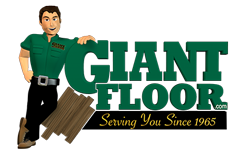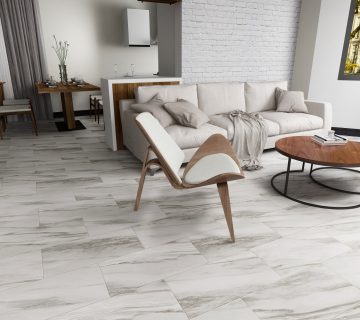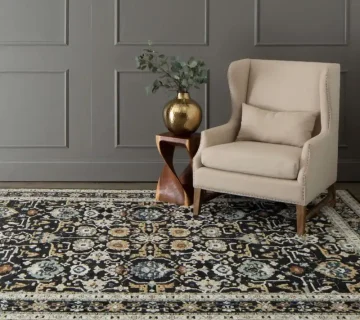So you’re setting up a garage gym, or you’re already set up with a gym, but you’re tired of working out on a concrete slab. In either case, it’s time to explore some garage gym flooring ideas. Good, durable flooring protects your homes foundation, your expensive equipment, and most importantly, you and your joints!
So what’s the best flooring for a gym? Well, if you’ve ever stepped foot in a box gym or CrossFit facility (as I’m sure you have), you’ve seen the dense, durable rubber flooring they have installed. While this is probably the best flooring option (and I’m certain what the majority of us would like to have), most of us can’t afford to outfit our personal gym with this material. So, we need some other options.
Option 1: Commercial Flooring
Let’s first look at the commercial flooring I was just talking about. The material you would find in a large, global gym. If money is of no issue, this stuff is about as nice as you’re going to get. It’s called Aktiv by Regupol. It is offered in a ton of colors, and as far as pricing goes for the commercial stuff, everywhere I’ve seen it sold requires you to request a quote.
You can also buy the tiled version of this flooring. It is called Aktivlok. I’m not sure how it compares to the commercially installed flooring, but prices are more readily available without asking for quotes, and it sells for about $4-$5 a square foot. So not too bad for a high quality product.
Option 2: Rubber Stall Mats
The next option is almost as good as the above-mentioned commercial flooring. Believe it or not, it’s horse stall mats. They are 3/4″ thick 4 ‘x 6’ rubber mats that run about $40 each ($1.66 per square foot). You can cover some serious square footage for not a lot of money with these. This is what I used in my own garage gym. They’re relatively easy to cut down to fit your space or when you need to cut holes to secure equipment to the ground. In my garage, my power cage is anchored to the slab. I easily cut around the feet of the cage with a jigsaw. I’ve seen videos of this stuff being cut with box cutters as well.
A couple of things about these mats. First of all, they are extremely durable. I drop dumbbells and weights on these regularly and never think twice about doing so. I haven’t so much as scratched these mats. They also hold their shape. If you bunch four or six of them together in a square, they all line up. They don’t distort like lesser quality rubber mats do. They are extremely heavy though. They weigh in at about 100 pounds each. Get help from a friend when you pick these up at the store (Tractor Supply Company has them for $39.99).
Option 3: Interlocking Rubber Tiles
Finally there is the economical option. CAP Barbell makes interlocking rubber tiles that you can purchase from local sporting goods stores like Academy or Dicks, or even online on eBay or Amazon. It’s cheaper than any other option, but you get what you pay for. If you’re going to be dropping bumper plates and dumbbells consistently, you may want to avoid these. I looked at them when I was shopping for my gym flooring but I didn’t feel like they would hold up for any length of time. Having said that, I didn’t actually buy them so I can’t say how well they will hold up for you. Read some reviews on Amazon for an idea of how people like them.
The hardware stores also sell versions of the interlocking vinyl or rubber tiles. The online reviews are hit or miss, and the specs don’t look all that great for the price (they seemed thin). Still, another option for you to consider.
So in summary, the more lightweight interlocking mats or tiles seem more suitable for putting under a treadmill or elliptical. Something that doesn’t move around much, but will still protect the floor underneath. For explosive movements with bumper plates, especially movements where a failed rep means dropping the bar, I would at the very least go with the heavier duty mats like the horse stall mats. If you’ve installed flooring not mentioned here and love it, leave a comment and tell us about it.



